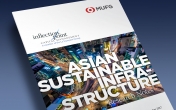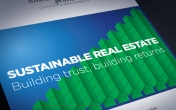The Fool’s Gold of Carbon Footprinting
In the wake of the unexpectedly successful COP 21 climate summit in Paris last December, investor awareness of both the investment risks and opportunities driven by climate change is increasing exponentially. That’s the good news. Here’s the bad:
Notwithstanding this new awareness, there is still far, far more climate-friendly rhetoric from investors than there is action. Most of what action there has been has taken the form of “carbon foot-printing.”
Briefly defined, carbon foot-printing is the increasingly popular trend among asset owners to determine the volume of carbon emissions from their various investment portfolios, usually measured against the applicable benchmark. On the face of it, this is a positive and responsible move. In our view at Inflection Point Capital, however, carbon foot-printing ―- at least as currently practised ― suffers from at least two cardinal weaknesses:
Firstly, in many if not most cases, it is used as a substitute for, rather than a precursor to, actual investment decisions and re-allocations of capital. Many asset owners, having commissioned the analysis , consider the job done and sit back, satisfied that they have done all that’s required of a 21st century fiduciary and prudent investor. In such cases, carbon foot-printing is actually dangerous, inasmuch as it serves as a smokescreen for the lack of any meaningful activity. After all, even 1,000 carbon foot-printing exercises, taken together, do not extract a single ton of CO2 from the atmosphere.
Secondly current foot-printing approaches are so limited and simplistic that they can easily produce results which are not only misleading but actually directionally wrong, and therefore perverse. A proper discussion of the reasons underpinning the first of these two deficiencies is beyond the scope of this short piece, so let’s focus on the second.
When we say that current approaches are overly simplistic, we mean that they are almost invariably one-dimensional ― and even that one dimension is seriously flawed. The footprint might be viewed as a portfolio’s gross emission profile, which is one, incomplete data point. So it will tell the asset owner and their stakeholders, for example, that the combined CO2 emissions generated by the institution’s portfolio might be, say, 300 million tons. (This figure will be reached by dividing each portfolio company’s emissions by the percentage of that company actually owned by the institution, since a pension fund owning .005% of Exxon Mobil can hardly be held responsible for its entire emissions). So far, so good. But the problem is that this is where the analysis usually finishes, aside from noting that this might be either 80% or 120% of the emissions that a similarly sized investment in the benchmark would have notionally produced.
But here’s the catch: what if only 50% of those emissions were generated in jurisdictions with carbon regulation, taxation, or pricing? Now admittedly, the biosphere cannot tell the difference between 10 million tons of CO2 emitted in Ecuador and the same amount in Dusseldorf, but an accountant sure can. And, at least at present, it’s only the German ones which have financial implications for investors. So the first step in what we would regard as a minimally adequate carbon foot-printing exercise would need to be a jurisdictionally-adjusted emissions profile. But even then, that only give us one of what should properly be a three-dimensional picture of an investor’s exposure to climate change.
What are the other two dimensions? Well, we’d argue that the two missing elements are arguably the most important ones: The adequacy and robustness of the portfolio companies’ risk management architecture.
Even if a company had above-average emissions for its industry sector, if it had best-in-class risk management systems, strong board oversight, and a CEO committed to a reduction strategy, the chances are good that the company could manage down its exposure far more quickly and effectively than its peers. Indeed, if those emissions were in a regulated jurisdiction, the company could even monetize those reductions! What ought to concern investors more than the gross footprint is the net one.
Portfolio companies’ ability to recognize and seize climate-driven opportunities on the upside. Too often, corporate and investor discussions of climate change focus entirely on downside risk, which we believe to be a cardinal error. What we’re experiencing right now is the early stages of what is nothing less than a global industrial restructuring, as we move towards a low-carbon economy. And, like any pervasive restructuring, the low-carbon variety will produce plenty of winners (think Tesla) as well as losers (think Peabody Energy).
Tomorrow’s winning investors will be the ones who can tell the difference, preferably a bit ahead of the market. So beware the siren song of carbon foot-printing and focus more on superior company research and actual investment.
FINANCIAL WARNING: The opinions expressed in this article do not constitute investment advice or recommendations or an offer to invest or to provide management services, and independent advice should be sought where appropriate.
Latest news
-
7 September 2017
-
26 June 2017
-
23 June 2017
-
18 May 2017



